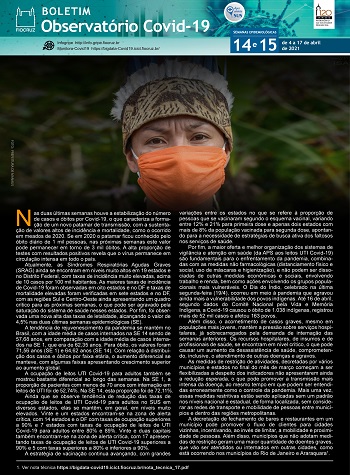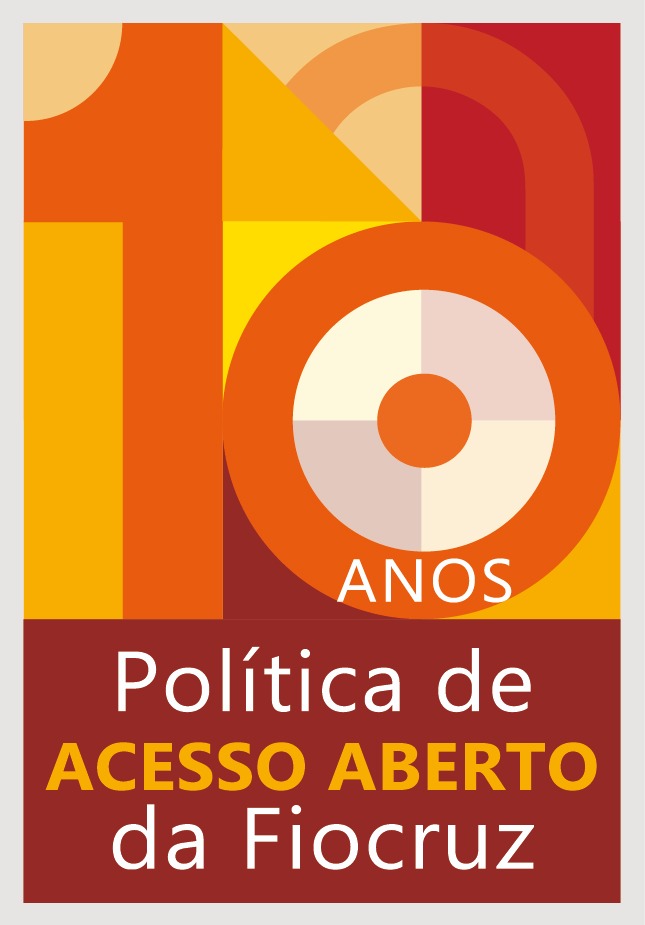Report points to progressive increase in COVID-19 rates amongst younger people
28/04/2021
Regina Castro (CCS/Fiocruz)
Published on April 24, the Bulletin of the Fiocruz COVID-19 Observatory, referring to Epidemiological Weeks (EW) 14 and 15, between 4 and 17 April, presents a general overview of the Covid-19 situation in the country and its implications. The new edition shows that the pandemic is hitting younger people. The number of cases and deaths by Covid-19 per age group shows that the differential increase per age group is steady. According to the analysis, the younger age group, from 20 to 29 years old, was the one with the higher number of deaths: 1,081.82%. The age group from 40 to 49 years old (1,173.75%) showed the higher increase in the number of cases.
 The Bulletin also includes analysis and data on how the pandemic is hitting younger people in Brazil, on COVID-19 hospital beds, Severe Respiratory Syndromes, activity and incidence rates, demographic profile, vaccination, income, employment, and social impact, among others. Based on these indicators, the report points to possible ways to fight the pandemic.
The Bulletin also includes analysis and data on how the pandemic is hitting younger people in Brazil, on COVID-19 hospital beds, Severe Respiratory Syndromes, activity and incidence rates, demographic profile, vaccination, income, employment, and social impact, among others. Based on these indicators, the report points to possible ways to fight the pandemic.
The global increase in cases for all age groups was 642.8% according to the data collected between EW 1 and EW 14, when the analysis per age group was made. Some age groups have maintained an increase in cases that exceeds the global trend: 20 to 29 years old (745.67%), 30 to 39 (1,103.49%), 40 to 49 (1,173.75%), 50 to 59 (1,082.69%), and 60 to 69 (747.65%). The global increase in deaths was 429.47%. The same age groups showed different increase rates: 20 to 29 years old (1,081.82%), 30 to 39 (818.60%), 40 to 49 (933.3%), 50 a 59 anos (845,21%), and 60 to 69 years of age (571.52%).
As for hospitalizations in Intensive Care Units (ICUs), once again comparing EW 1 and EW 14, the occupation of these beds was very different between age groups over the weeks. On EW 1, the rate of patients with less than 70 years of age hospitalized in ICUs was 52.74%. On EW 14, this rate was 72.11%. According to the survey, these figures suggest that the occupation of ICU beds by a younger population has been on the rise.
ICU beds for COVID-19
Occupation rates for COVID-19 ICU beds for adults at the Brazilian Public Health System (SUS) in different states have overall remained very high. Data obtained on April 19, when compared with April 12, show that the state of Amapá is no longer in the critical alert zone and is now in intermediate alert, in which the states of Amazonas, Maranhão, and Paraíba were already. With the exception of the state of Roraima, which is no longer in the alert zone, all other states and the Federal District have remained in the critical alert zone.
Highlights, either due to magnitude or to the consistency of reduction trends, are the states of Amazonas (73% to 69%), Roraima (44% to 38%), Pará (82% to 80%), Amapá (84% to 68%), Rio Grande do Norte (98% to 93%), Paraíba (70% to 63%), Alagoas (88% to 83%), Bahia (84% to 82%), Minas Gerais (91% to 89%), Espírito Santo (95% to 91%), Rio de Janeiro (90% to 86%), São Paulo (86% to 83%), Rio Grande do Sul (88% to 83%) and Goiás (96% to 90%).
Fourteen states and the Federal District have occupation rates above 90%: Rondônia (94%), Acre (94%), Tocantins (93%), Piauí (94%), Ceará (98%), Rio Grande do Norte (93%), Pernambuco (97%), Sergipe (97%), Espírito Santo (91%), Paraná (94%), Santa Catarina (97%), Mato Grosso do Sul (100%), Mato Grosso (96%), Goiás (90%) and the Federal District (98%). Seven have occupation rates for ICU beds for adults between 80 and 89%: Pará (80%), Alagoas (83%), Bahia (82%), Minas Gerais (89%), Rio de Janeiro (86%), São Paulo (83%) and Rio Grande do Sul (83%). Finally, four states show rates between 63% and 78% – Amazonas (73%), Amapá (68%), Maranhão (78%), and Paraíba (63%) – while another (Roraima) has an occupation rate of 38%.
Cases and deaths
On Epidemiological Weeks 14 and 15 (from April 4 to April 17), almost all states showed stable indicators, with the exception of Roraima, where a new rise was observed for the number of cases as well as of deaths. A small drop in the number of cases was observed in the state of Amapá.
The higher rates of COVID-19 cases were observed in the states of Rondônia, Amapá, Tocantins, Ceará, Minas Gerais, Espírito Santo, Mato Grosso do Sul and Mato Grosso, and in the Federal District. High mortality rates were observed in the states of Rondônia, Espírito Santo, São Paulo, Paraná, Rio Grande do Sul, Mato Grosso do Sul, Goiás and in the Federal District. This pattern show that the South and Center-Western regions will be critical in the upcoming weeks, which may be aggravated by the saturated health system in these states.
Rio de Janeiro (8.3%), Paraná (6.2%), Distrito Federal (5.3%), Goiás (5.2%) and São Paulo (5.1%) showed the highest mortality rates. According to the researchers, the high lethality figures reveal severe problems in the healthcare and health surveillance system in these states, such as insufficient testing, insufficient identification of vulnerable groups, and lack of referral of severe patients.
Severe Acute Respiratory Syndromes
The analysis shows that the rates of Severe Acute Respiratory Syndromes (SARS), another strategic indicator, are stable in many states, or falling. These numbers are still very high, however. About 90% of SARS cases are caused by infection by SARS-CoV-2.
Nineteen states and the Federal District have very high incidence rates, above 10 cases per 100,000 inhabitants: Rondônia, Roraima, Pará, Maranhão, Piauí, Ceará, Rio Grande do Norte, Paraíba, Pernambuco, Alagoas, Sergipe, Minas Gerais, Rio de Janeiro, São Paulo, Paraná, Santa Catarina, Rio Grande do Sul, Mato Grosso do Sul, and Goiás. In the remaining states, incidence rates are very high, above one case per 100,000 inhabitants.
States with high and stable rates of SARS are mainly those in the South and North-East regions. In particular, the city of Recife shows a rising trend, when the moving average is observed in the last three epidemiological weeks. Researchers warn that “stability with high rates is not desireble, as hospital beds still have high occupation rates”.




